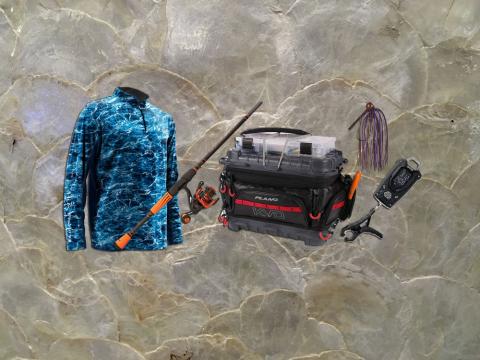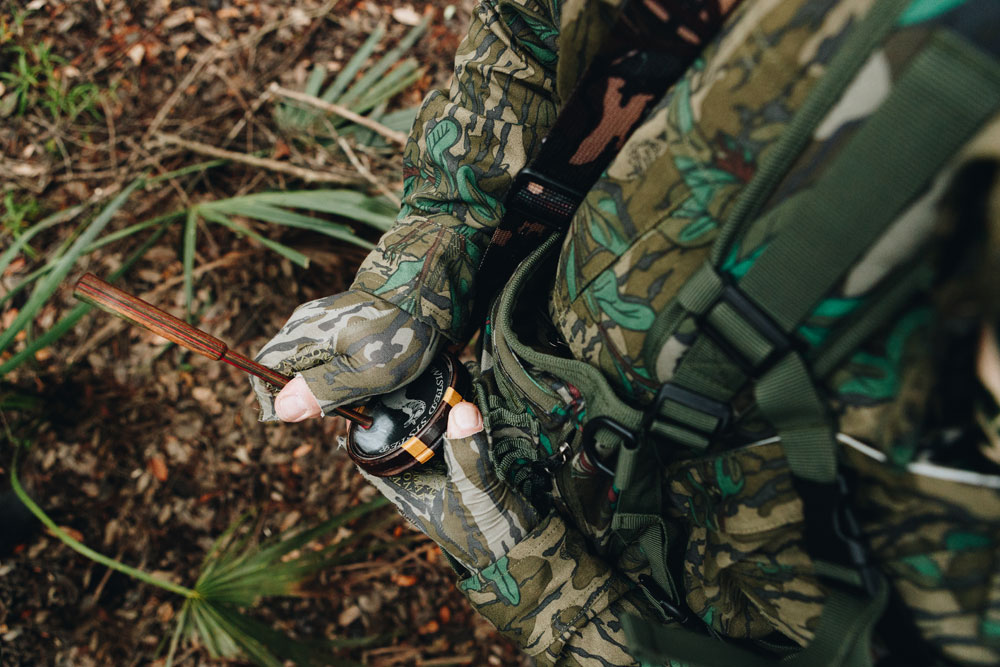
Josh Grossenbacher, Mossy Oak ProStaffer, world champion turkey caller and maker of diaphragm calls for Zink Calls, provides turkey calling tips, tricks and techniques for turkey hunting. Whether you are hunting Easterns, Osceolas, Rio Grandes or Merriam’s, Grossenbacher offers techniques on calling each subspecies of turkey. Not only that, you must take care of those turkey calls. He gives advice on conditioning and maintaining these important turkey hunting tools. Each year, there are a variety of new calls available for turkey hunters, so take advantage of these news calls that seem to get more realistic year after year.
Beginner’s Guide to How to Use a Mouth Call for Turkey Hunting
There are three parts to a diaphragm or mouth call: the tape, the frame and the latex reed. The mouth call goes in tape end first and reed facing outward. Rest the call on your tongue and press it to the roof of your mouth to create a seal with your palate. Pushing air through the call causes the reeds to vibrate and produce those turkey sounds. Changing the pressure with your tongue and airflow changes the tone of the call. Once you practice getting sound out and holding tones, you can then begin practicing rhythm and cadence as that is the most important aspect of calling turkeys.
Advanced Methods for Calling Turkeys with a Mouth Call
Once you’re able to produce consistent sound with a mouth call, begin working on the variations of calls that wild turkeys make, clucks, cuts and yelps, for example. You want to be able to mimic the sounds a hen makes, which are varied in style and volume. Slight variations in your calling can make all the difference.
Calling Tips for Eastern and Osceola Turkeys
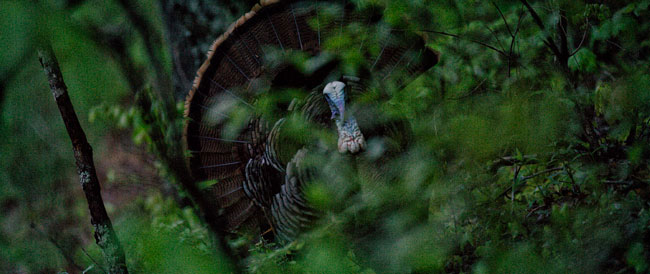
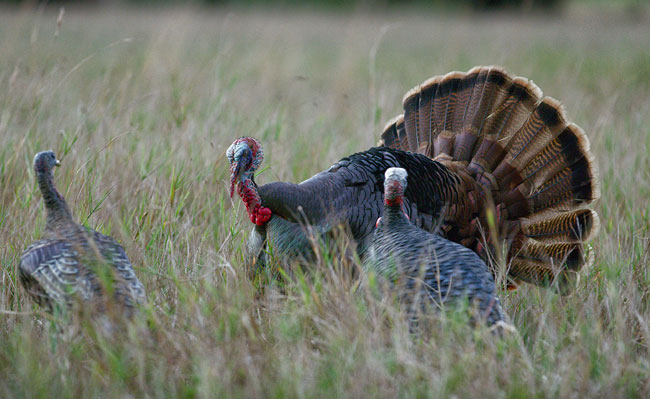
How to strike up a gobbler in different regions can vary. When trying to locate an Eastern, start yelping and build into cuts to try and pull the gobble out of the tom. Keep the series brief so you can listen for the gobbler’s return call. Osceola turkeys are very similar. Begin with hard, aggressive yelps and cuts.
Calling Tips for Rio Grande Turkeys
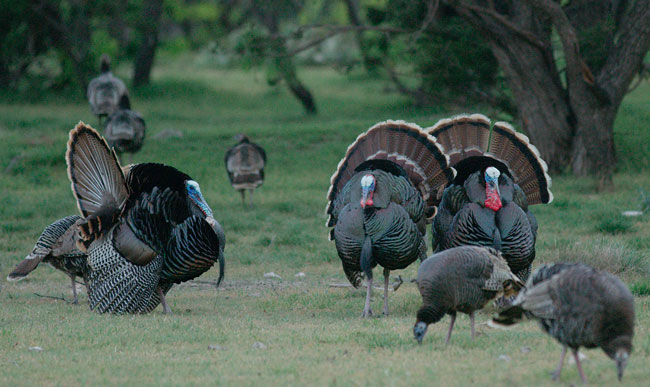
Rios are less aggressive with hens than the Eastern and Osceola gobblers. To strike a Rio Grande, strictly yelp, both clear and raspy tones. Increase the volume of your calling to cover ground to try to pull the gobble out of the turkey.
Calling Tips for Merriam’s Turkeys
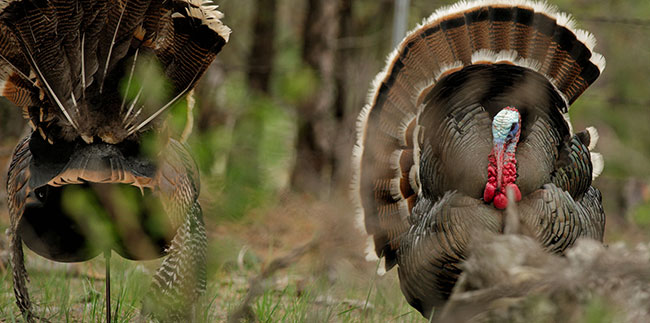
Merriam’s hens don’t have as sharp of a cut as other subspecies of turkey hens. It’s more of a popping or pit sound. Listening to real Merriam’s hen calls helps identify the difference in their calls versus other subspecies. To produce the pit sound, Grossenbacher blows the air through the side of the call and smacks his lips together to get the popping sound. It’s definitely a call that needs practicing before heading out to hunt Merriam’s.
When To Soft Call Turkeys
Once you have a turkey’s attention, you need to change your calling. Yelps, clucks and purrs with the soft calling technique can help coax the gobbler to come to you.
How to Use a Slate or Pot Style Friction Turkey Call
Slate or pot style calls are a type of friction turkey call. It has two pieces, a slate or glass “pot” and a striker. Hold the striker like a pencil and flip the top end away so the striker is at an angle moving back towards you. Create a yelp by making a small circle, oval or diagonal motion without lifting the striker. The down motion creates sound but the upward motion should not. To make a cluck, just slightly pop the striker towards you. Cutting is a faster pace than the clucks. Mix cutting and yelping together for a more realistic series of turkey calls.
How To Condition Your Slate Call
You always want to make sure your call surface is conditioned properly for effective calling. On a slate surface, Scotch-Brite™ will remove moisture, oil or smoothness from the plate that may affect the striker movement and friction.
How To Condition Your Striker Tip for a Friction Call
Keep your striker tip clear of any debris or dirt that may have built up on the tip. Some pot calls have a hole that serves just that purpose. If your call does not have a built-in striker cleaner, just take some sandpaper and sand off any build up. Taking care of your calls is important for creating the most realistic turkey sounds.
Audio Sequence for Calling Turkeys
Hear an audio sequence for calling turkeys:
It takes more than just good calling to be an effective turkey hunter. With the right camouflage and turkey hunting gear, you're well on your way to bagging you first tom.

















